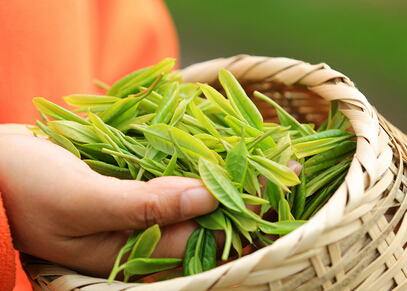Spring has arrived, and it's the season for new tea to hit the market. Observing the appearance, color, aroma, and taste are common steps to identify new tea, but these professional methods can be too complex and disrupt the leisurely enjoyment of tea. Today, Xiao Wu will teach you the most important and indispensable trick to identify new tea—smelling the aroma!

Reference Image
New Tea Season: How to Avoid Old Tea and Successfully Buy New Tea?
Many tea lovers prefer new tea for its fresh taste and rich flavor. However, selecting new tea has become a challenge for general consumers. So, how can we identify new tea when purchasing tea leaves?
Phoenix Dancong
Oolong tea requires a roasting process. Although there are different roasting levels and methods, freshly made oolong tea usually has a strong roasted aroma. This scent might initially seem overpowering, but it’s characteristic of newly produced tea. For example, Phoenix Dancong and Wuyi rock tea need to rest for a while after production to allow the roasted flavor to fade before they can be enjoyed.
Green Tea
Green tea holds a significant share in the tea market and is a favorite among many, especially office workers. Known for its "fresh and refreshing" taste, green tea is even better when new. To identify new tea, observe its shine—freshly made tea has a vibrant appearance, with tender leaves and an invigorating dry aroma.
Pu-erh Raw Tea
Pu-erh raw tea has a distinctive aroma, somewhat grassy and not very pleasant. The tea cake is mostly green, and the taste is astringent and highly stimulating, which some people may find hard to tolerate.
To identify new tea across different types, focus on color, taste, and aroma. Oolong tea emphasizes roasted flavors, green tea highlights shine, and Pu-erh tea stands out for its strong, stimulating taste. Another characteristic of new tea is its low moisture content—normally below 7%. The tea leaves are hard and brittle, crumbling easily when pressed lightly.
Extended Reading:
How to Store Tea
There are two absolute taboos for tea storage: moisture and odors. Specifically:
1. After opening, use a clip to seal the package and store it naturally. The best consumption period is around one month. Many tea companies now use small packages, such as 50g or 100g sealed bags, for convenience. Traditional tea companies may still use larger 250g or 500g packages, which may seem cost-effective but are actually less practical.
2. Sealed green tea, yellow tea, scented tea, and Tieguanyin are best stored in the refrigerator.
3. Black tea, white tea, and other oolong teas can be stored naturally, away from light, moisture, and odors.
4. Dark tea storage, including Pu-erh, Fu tea, and Qingzhuan, requires breathable packaging to allow the tea to continue oxidizing. A certain level of humidity is necessary, as overly dry conditions are not ideal. For example, Jingyang Fu brick tea is known for its "golden flowers" (a type of beneficial microorganism), so it shouldn’t be stored too dry. At home, store it on the balcony in winter (with heating) and move it indoors in summer to avoid high temperatures and direct sunlight.